miR-143-3p modulates depressive-like behaviors via Lasp1 in the mouse ventral hippocampus
- PMID: 39098885
- PMCID: PMC11298515
- DOI: 10.1038/s42003-024-06639-y
miR-143-3p modulates depressive-like behaviors via Lasp1 in the mouse ventral hippocampus
Abstract
Depression is a prevalent and intricate mental disorder. The involvement of small RNA molecules, such as microRNAs in the pathogenesis and neuronal mechanisms underlying the depression have been documented. Previous studies have demonstrated the involvement of microRNA-143-3p (miR-143-3p) in the process of fear memory and pathogenesis of ischemia; however, the relationship between miR-143-3p and depression remains poorly understood. Here we utilized two kinds of mouse models to investigate the role of miR-143-3p in the pathogenesis of depression. Our findings reveal that the expression of miR-143-3p is upregulated in the ventral hippocampus (VH) of mice subjected to chronic restraint stress (CRS) or acute Lipopolysaccharide (LPS) treatment. Inhibiting the expression of miR-143-3p in the VH effectively alleviates depressive-like behaviors in CRS and LPS-treated mice. Furthermore, we identify Lasp1 as one of the downstream target genes regulated by miR-143-3p. The miR-143-3p/Lasp1 axis primarily affects the occurrence of depressive-like behaviors in mice by modulating synapse numbers in the VH. Finally, miR-143-3p/Lasp1-induced F-actin change is responsible for the synaptic number variations in the VH. In conclusion, this study enhances our understanding of microRNA-mediated depression pathogenesis and provides novel prospects for developing therapeutic approaches for this intractable mood disorder.
© 2024. The Author(s).
Conflict of interest statement
The authors declare no competing interests.
Figures
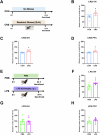
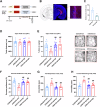
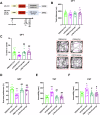

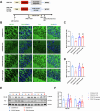

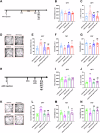

Similar articles
-
Circ_0023028 contributes to the progression of laryngeal squamous cell carcinoma by upregulating LASP1 through miR-486-3p.Mol Cell Biochem. 2021 Aug;476(8):2951-2961. doi: 10.1007/s11010-021-04129-x. Epub 2021 Mar 23. Mol Cell Biochem. 2021. PMID: 33755879
-
CircTIAM1 overexpression promotes the progression of papillary thyroid cancer by regulating the miR-338-3p/LASP1 axis.Oncol Res. 2024 Oct 16;32(11):1747-1763. doi: 10.32604/or.2024.030945. eCollection 2024. Oncol Res. 2024. PMID: 39449799 Free PMC article.
-
Hippocampal LASP1 ameliorates chronic stress-mediated behavioral responses in a mouse model of unpredictable chronic mild stress.Neuropharmacology. 2021 Feb 15;184:108410. doi: 10.1016/j.neuropharm.2020.108410. Epub 2020 Nov 23. Neuropharmacology. 2021. PMID: 33242526
-
Effects of the LINC00641/miR-323a-3p/EIF4G2 axis on behaviors and brain monoamine neurotransmitters in chronic unpredictable mild stress mice.Cell Biol Toxicol. 2025 Apr 28;41(1):76. doi: 10.1007/s10565-025-10015-9. Cell Biol Toxicol. 2025. PMID: 40293545 Free PMC article.
-
LINC01503/miR-342-3p facilitates malignancy in non-small-cell lung cancer cells via regulating LASP1.Respir Res. 2020 Sep 16;21(1):235. doi: 10.1186/s12931-020-01464-3. Respir Res. 2020. PMID: 32938459 Free PMC article.
References
Publication types
MeSH terms
Substances
Grants and funding
- 81871059/National Natural Science Foundation of China (National Science Foundation of China)
- ZR2023MC124/Natural Science Foundation of Shandong Province (Shandong Provincial Natural Science Foundation)
- ZR2022MC200/Natural Science Foundation of Shandong Province (Shandong Provincial Natural Science Foundation)
- ZR2021MH406/Natural Science Foundation of Shandong Province (Shandong Provincial Natural Science Foundation)
LinkOut - more resources
Full Text Sources
Medical
Miscellaneous

